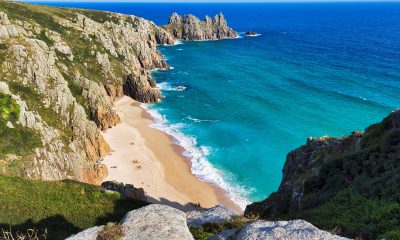News
Deptherapy Veterans help to guide coral reef conservation in Chuuk Lagoon

Back in August 2018, a team of UK Veterans from the charity Deptherapy & Deptherapy Education, supported by Coral Cay Conservation (CCC), headed to Chuuk Lagoon, Micronesia, to collect critical ecological data from the Shinkoku Maru, a shipwrecked World War II vessel.
The expedition was part of the wider effort by Deptherapy following the launch of their “Protecting our Oceans” campaign where the charity’s members ‘give back’ to the Oceans that have given so much to them. The aim of the campaign is to raise awareness of the plight of the world’s oceans and for Deptherapy programme members to make their own practical contribution to environmental protection.
Following extensive training at ROOTS Red Sea in May 2018, the Deptherapy team set out to undertake preliminary data collection protocols through SCUBA to ecologically map the fauna and benthic community residing on the Shinkoku Maru. The data, and subsequent report, downloadable below, are to be delivered to resource managers and government bodies in Chuuk lagoon, to provide greater ecological clarity and evidence to facilitate management practices.
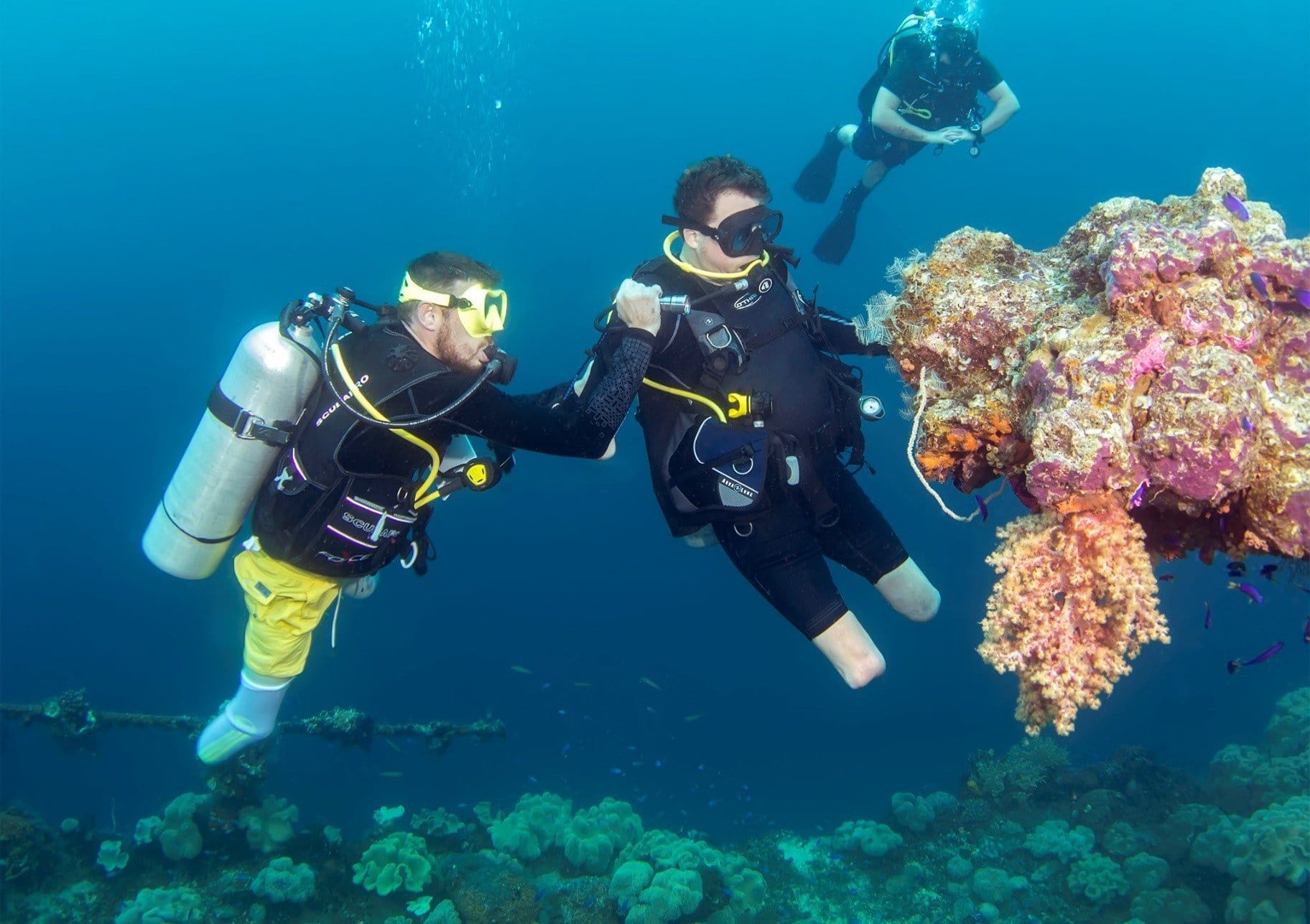
Deptherapy expedition members utilise their training to identify the colourful benthic fauna encrusting shipwrecks in Chuuk Lagoon – Photo: Dmitry Knyazev
The resulting scientific report from the expedition, authored by CCC’s Head of Science, Tom Dallison, and Ben Lee, and supported by Bear Grylls OBE, highlights, notably, that personnel suffering from various physical and mental ailments hold the ability to undertake such studies and that efforts to conserve our Oceans are accessible to all; overcoming the barriers associated with the rigorous physical demands of undertaking scientific data collection protocols through SCUBA.
“This is all about enabling Armed Forces’ Veterans to take action against the plights suffered by our Oceans. It is an inspired and brilliant collaboration and I am proud to be involved.”
Bear Grylls OBE – Global Adventurer
The coral reefs of the Pacific region, including the Federated States of Micronesia (FSM) and Chuuk Lagoon, are in relatively good health and account for approximately 25% of the world’s coral reefs making the region a diver’s paradise! Chuuk Lagoon is one of the worlds largest lagoons, composed of over 2,000km2 of coral reef and lagoon habitat (with an additional 200km barrier reefs), and is an important bio-geographical link between the Coral Triangle and other Pacific island groups. In addition to boasting some of the most extensive coral reef systems in Micronesia, Chuuk Lagoon also has a rich military history and is well known amongst the dive community as the lagoon hosts approximately 50-60 WWII shipwrecks, including 12 aircraft wrecks. One of these shipwrecks, and the wreckage assessed by Deptherapy team members, is the Shinkoku Maru which is a large Japanese oil tanker, found between 11 – 37m.

Benthic fauna that occupy many of the shipwrecks throughout Chuuk Lagoon – Photo: Dmitry Knyazev
In addition to the localised physical impacts to coral reefs caused by WWII, the lagoon has continued to experience severe environmental impacts through overfishing, pollution and rising ocean temperatures. Derelict vessels have often been utilised, or intentionally positioned to compensate for natural reef habitat loss and the loss of biodiversity, with evidence presenting high levels of diversity and fish biomass. However, evidence further suggests that, in fact, derelict vessels or shipwrecks support distinct reef-associated fish and benthic communities, possibly increasing an area’s resilience to environmental impacts. As such, Deptherapy’s assessment provides insight into the current ecological status of the Shinkoku Maru wreckage delivering incentives to the dive tourism industry and contributing to conservation efforts in the region.
In order to effectively assess the ecological community of the Shinkoku Maru, the wreck was split into two segments (Bow and Mid-section) to record fish diversity and abundance data. The wreck was then further split into three segments (Bow, Mid, Stern-section) to record the relative composition of benthic substrates that included Hard Coral and the respective lifeform (branching, massive and sub-massive etc.).

A Deptherapy team member with an adapted prosthetic limb diving in Chuuk Lagoon amongst the incredible biodiversity of the Pacific region – Photo: Dmitry Knyazev
Fishes were recorded as an exposure rate (per minute) by the Deptherapy team with Surgeonfish (Acanthuridae) recorded in the greatest abundance, followed by the Eastern Triangle Butterflyfish (Chaetodon baronessa). Throughout the assessment of the wreck, the survey team were also greeted by 12 Whitetip Reef Sharks (Triaenodon obesus) and one turtle!
The exposure rates and diversity of fishes was a positive find for Deptherapy with an abundance of marine life found across the entire wreckage. Following the sizing (cm) of each individual fish, it was found that species were dominated by smaller individuals, often an indication of overfishing as the majority of larger fish are removed by fisherfolk. The sizing of individual fishes enabled the Deptherapy team to calculate biomass (kg) which was found to differ between each section of the wreck indicating that specific areas were favoured by particular species, possibly driven by refuge or prey availability.
Assessments of the benthic community found that Hard Corals covered approximately 25% of the wreckage with a fairly homogeneous distribution across the entire wreck proving both positive from an ecological perspective and touristic potential as, due to the range of depths, divers of all abilities can enjoy the diverse corals of the vessel. The lifeform of the recorded Hard Coral was also found to be homogeneous further supporting the wreck’s accessibility and ecological value.
The abundance of a seemingly even distribution and diversity of Hard Corals on the Shinkoku Maru wreck, as well as the presence of specialised obligate corallivorous butterflyfish species and apex predators, such as Whitetip Reef Sharks, indicates that the community associated with the Shinkoku Maru wreck is in good ecological status, proving positive for the ecological characteristics and services of the survey area as well as for tourism. However, low levels of biomass and the dominance of smaller individuals should be investigated further.

Deptherapy launch their “Protecting Our Oceans” campaign in Chuuk Lagoon, Federated States of Micronesia (FSM) in August 2018 – Photo: Dmitry Knyazev
Deptherapy Programme Member Ben Lee summarised the Chuuk Lagoon expedition and the achievement by the survey team:
“Completing the study was a massive achievement for the Deptherapy team, not only because we had accomplished our set aims in Truk [Chuuk], but also proved to the world that we, as disabled veterans, missing limbs and having mental health issues, can conduct our own conservation-orientated studies and help in the protection of our Oceans; a pledge we have made through our Protecting Our Oceans Campaign.”
Download the full report, entitled “Chuuk Lagoon, Micronesia; a 2018 Ecological Assessment of the Shinkoku Maru Wreck – 2019″. If you have any further queries about the report or the organisations involved, you can contact Coral Cay Conservation or Deptherapy for further information.
Blogs
TRAVEL BLOG: Jeff Goodman Dives SOMABAY, Part 3

Today we are diving one of the outer reefs from an inflatable. As we reach the bottom, a reef octopus eases its way into the cover of a small crack in the coral while displaying it’s incredible ability to change colour. They are arguably one of the most charismatic of reef dwellers and it is always exciting for me to simply hover and watch. I would have spent longer and waited for it to come and investigate me, but as dive time is limited we wanted to move on and find a turtle.

The waters around Somabay are well protected and hold a rich variety of marine life. The reef edges are thriving colonies of coral and shoaling fish, while nearer the sea bed plenty of wildlife is still to be found.
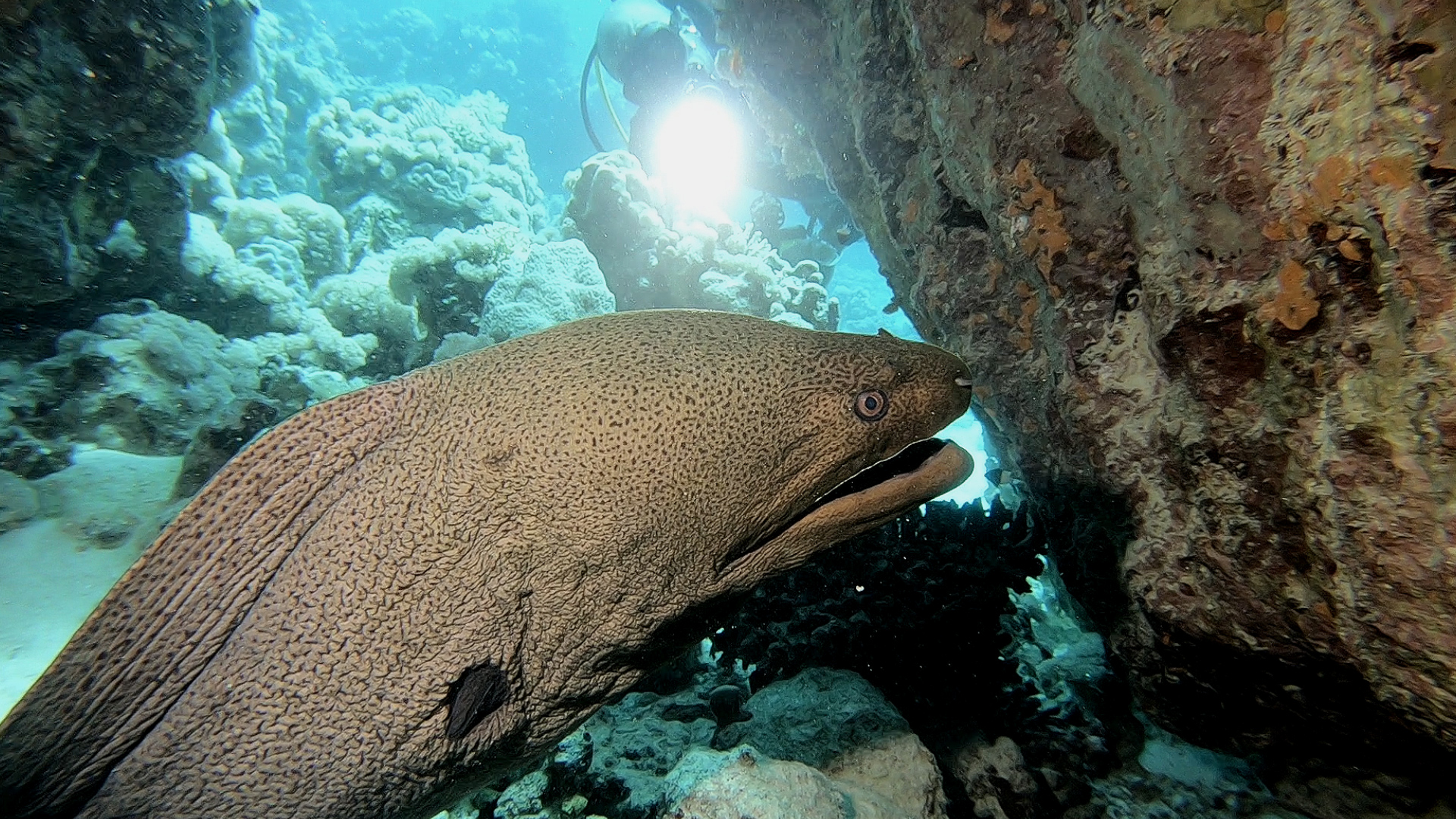
Then we located the turtles. They are very used to divers and so show little concern when slowly approached. In fact occasionally one will come over to see what you are doing. There is always huge excitement when diving with a turtle. The shear thrill of sharing a moment with another species.

What a fantastic way to finish a wonderful few days diving and I would like to thank SOMABAY, ORCA DIVING and THE BREAKERS for making my stay such a good one.
I had a great time, with diving everyday either on the house reef or on one of the offshore reefs by inflatable or larger day boat. Orca diving provided high quality equipment and facilities while the staff were all very friendly and welcoming. The Breakers was right on the coast with nice rooms, good food and once again friendly staff making the whole trip a real pleasure.

Soma Bay covers an entire peninsula and is home to several resorts as well as residential compounds.
As well as scuba diving, Somabay caters for many other sports and activities, and so is perfect for families as well as individuals and/or groups. And of course there is always time to lay peacefully on the beach under the Egyptian sun.
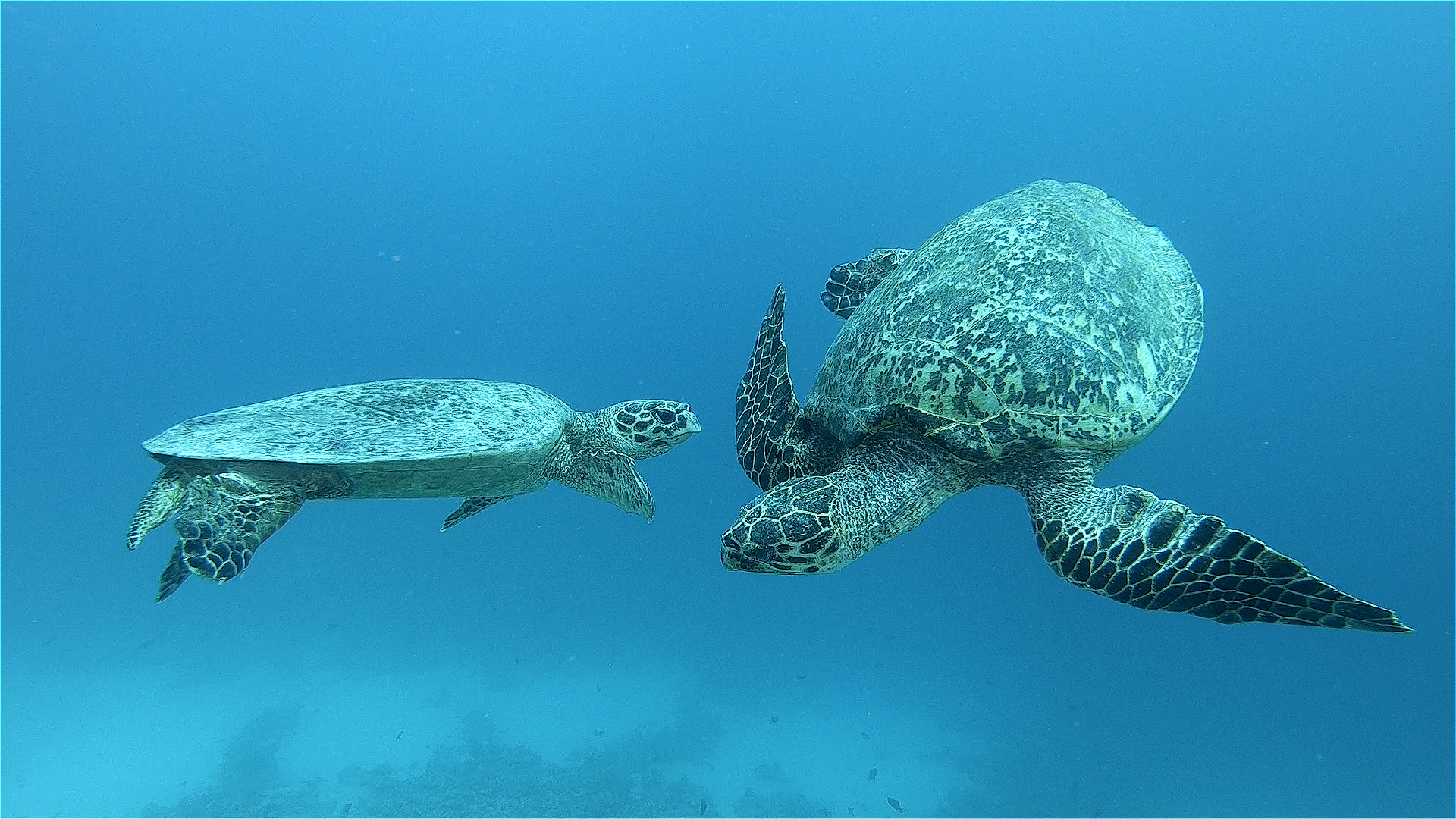
Book your next Red Sea dive adventure with SOMABAY! For more information, visit www.somabay.com.
Stay at the Breakers Diving & Surfing Lodge when you visit! For more information, visit www.thebreakers-somabay.com.
Find out more about ORCA Dive Clubs at SOMABAY at www.orca-diveclubs.com/en/soma-bay-en.
Blogs
TRAVEL BLOG: Jeff Goodman Dives SOMABAY, Part 2
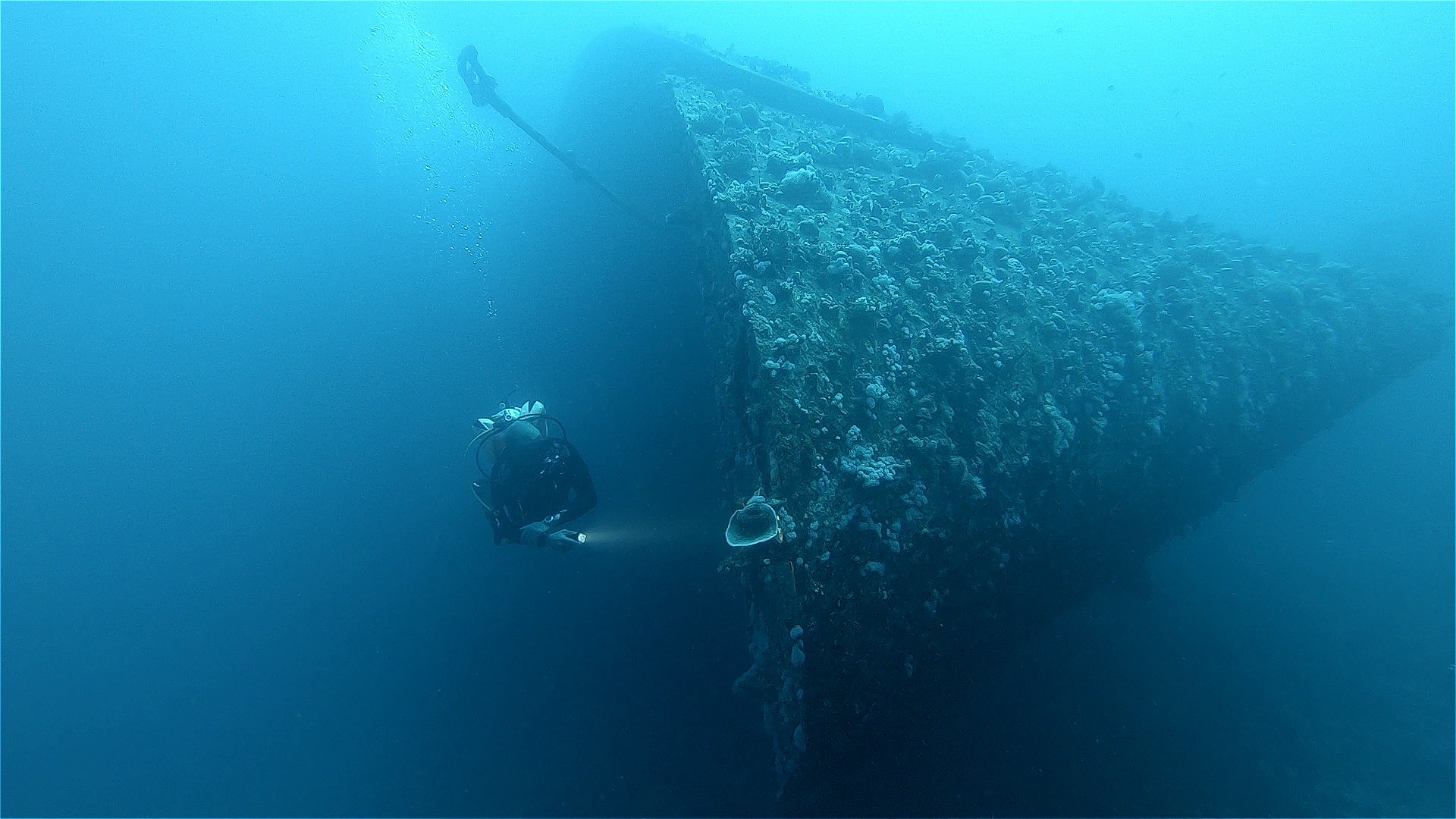
Day three of my trip to Somabay and we were spending the day on the Lady Christina and diving on the wreck of the Salem Express.
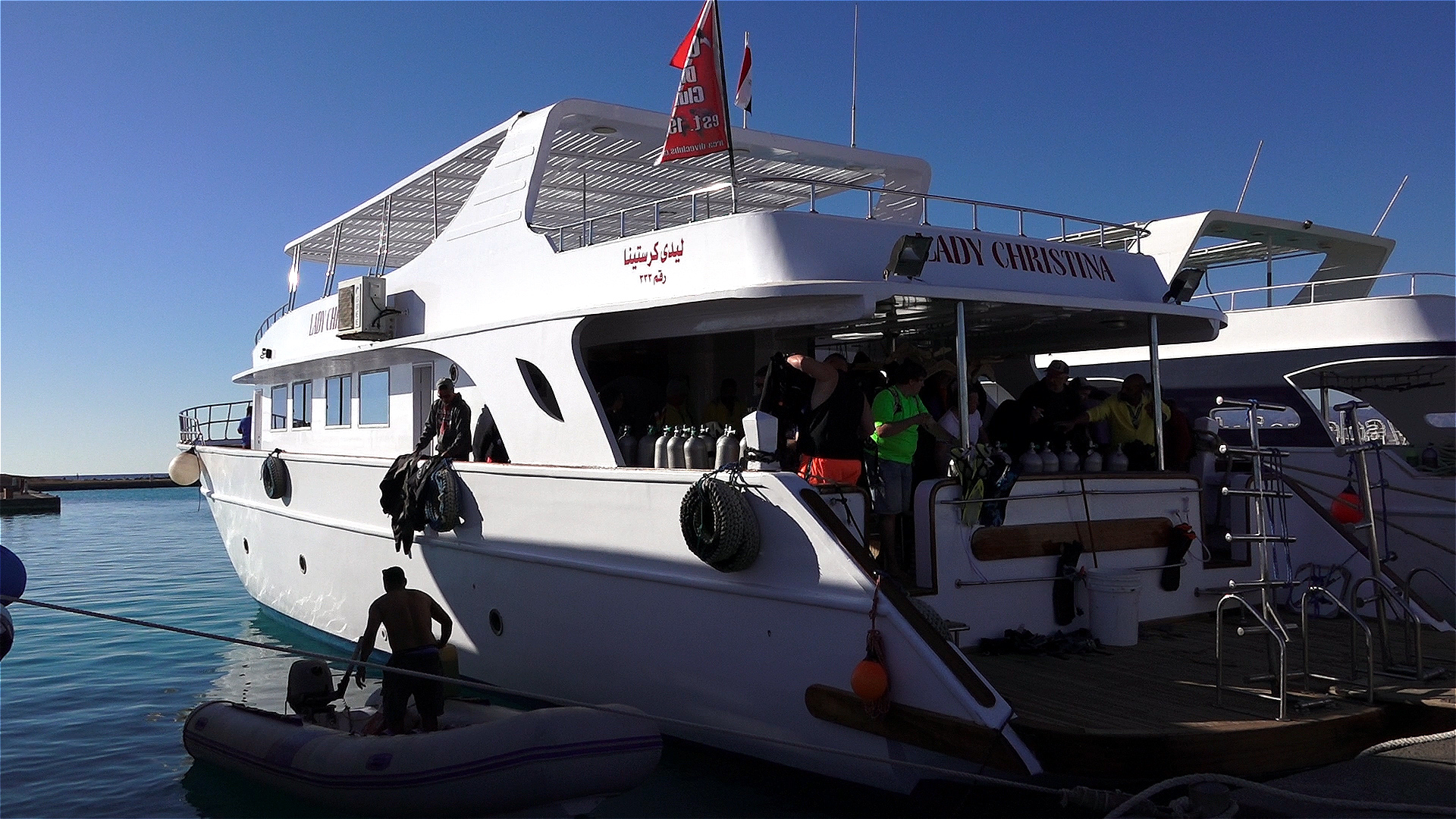
Diving wrecks for me is always one of mixed emotions. The excitement of diving a wreck is more than often tempered by the thought of loss of life when she sank. The Salem Express was a passenger ship and a roll-on/roll-off ferry travelling from Jeddah, Saudi Arabia to Safaga, Egypt. Most passengers were of poor class travelling home from their holidays while around 150 people were returning home from their pilgrimage to Mecca.

The ship struck a reef and sank within 20 minutes. Passengers were trapped below deck and the ship was filled with fear and panic.
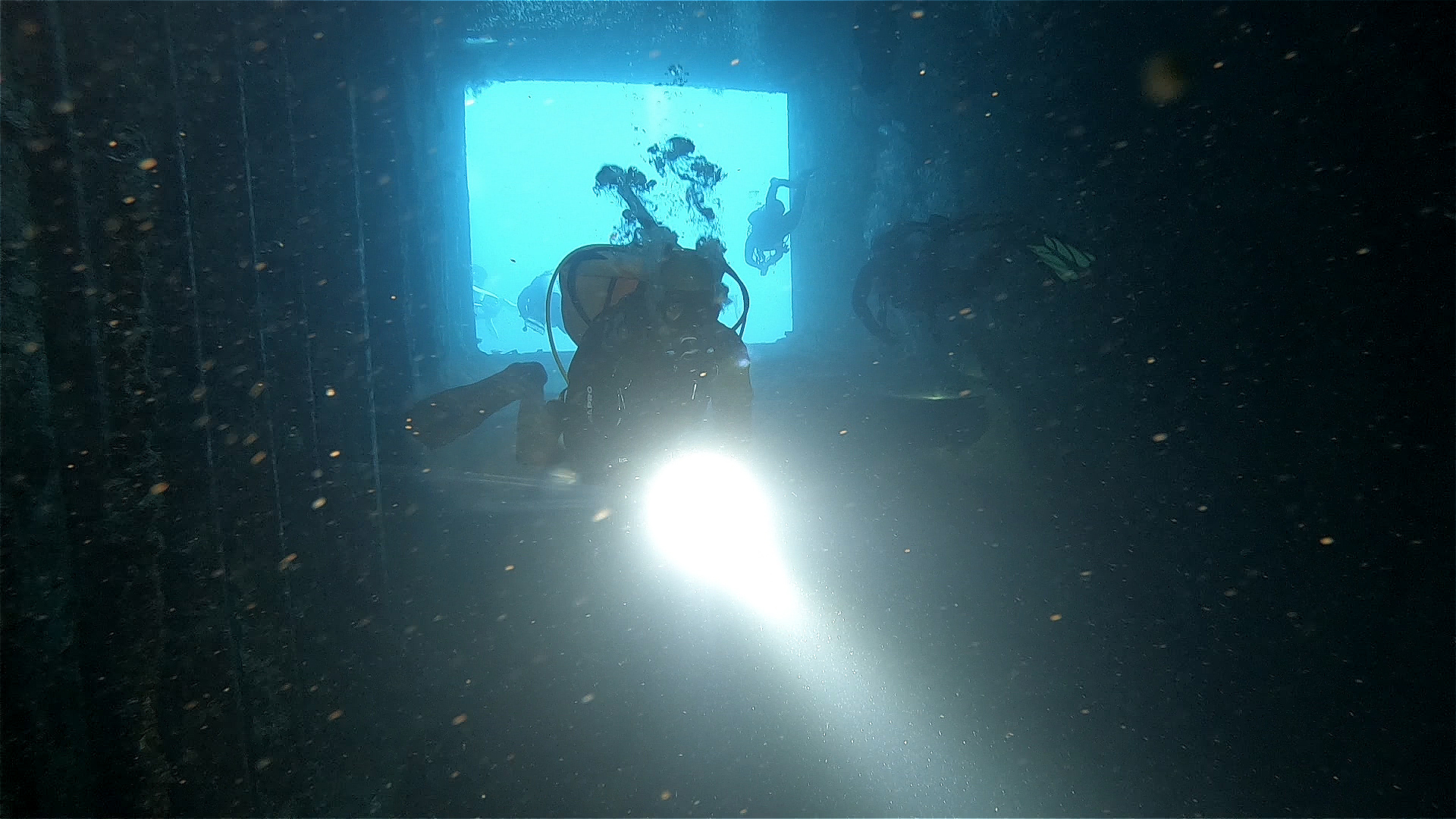
The wreck area is strewn with personal belongings from the crew and passengers such as a transistor radio and a flat iron for clothes. A diver at sometime has put them in a prominent place to be seen.

Tragically only one life boat was launched while the others went down with the ship. More than 600 men, women and children lost their lives here.
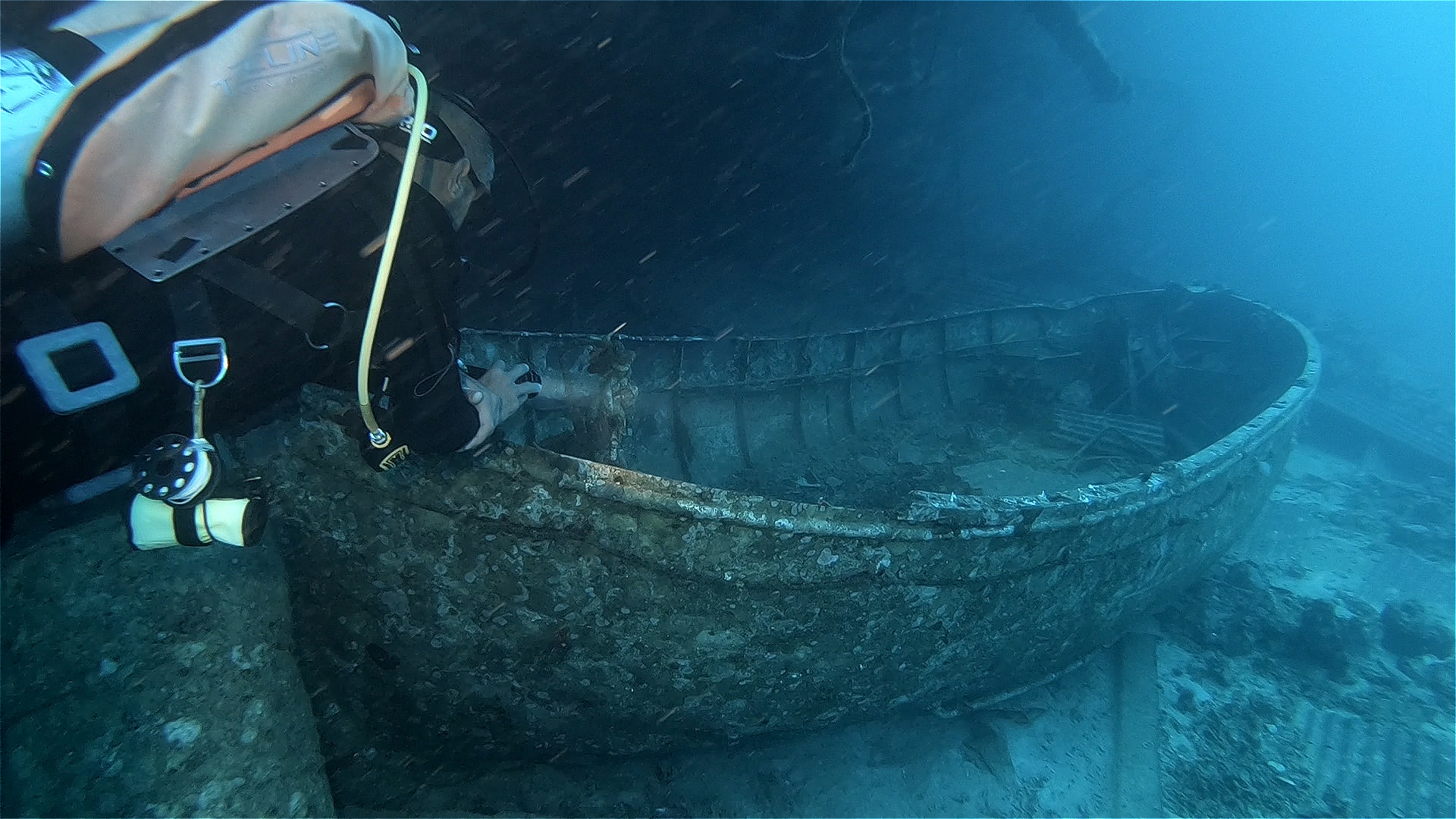
It’s a stark reminder that the sea can be unforgiving and so when we dive on such wrecks we should do so with humble regard.
Returning to the surface, shoals of fish are gathered under our boat and seem to be welcoming us back into the light.
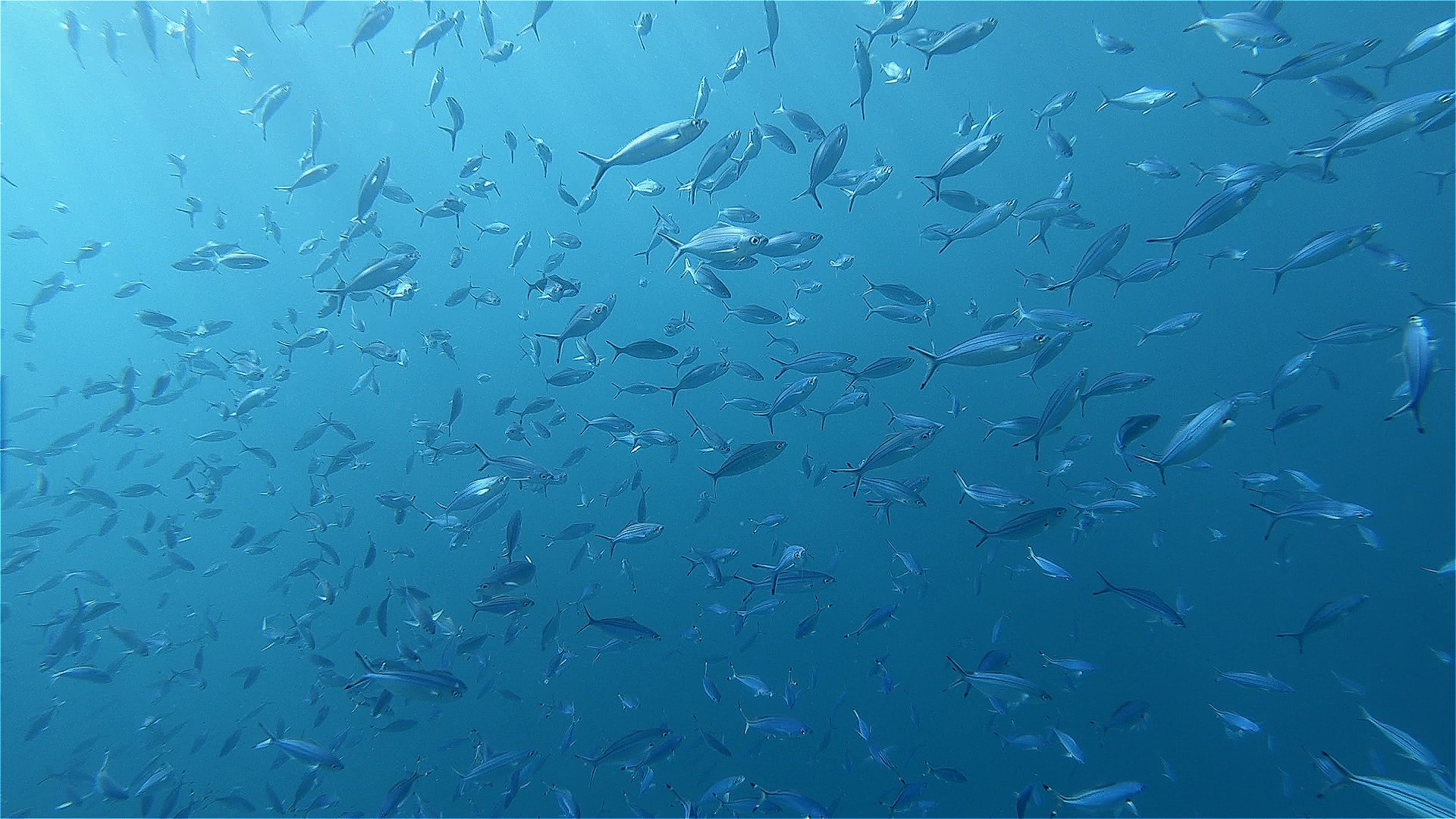
Back at the Breakers I sat in the dining area with a beer and a very good meal while my thoughts still remained with the day’s dive on the Salem Express.
Check in for part 3 tomorrow for Jeff’s last day of diving with Somabay on the off-shore reefs looking for turtles.
Book your next Red Sea dive adventure with SOMABAY! For more information, visit www.somabay.com.
Stay at the Breakers Diving & Surfing Lodge when you visit! For more information, visit www.thebreakers-somabay.com.
Find out more about ORCA Dive Clubs at SOMABAY at www.orca-diveclubs.com/en/soma-bay-en.
-

 News3 months ago
News3 months agoHone your underwater photography skills with Alphamarine Photography at Red Sea Diving Safari in March
-

 News2 months ago
News2 months agoCapturing Critters in Lembeh Underwater Photography Workshop 2024: Event Roundup
-

 Marine Life & Conservation Blogs2 months ago
Marine Life & Conservation Blogs2 months agoCreature Feature: Swell Sharks
-

 Blogs1 month ago
Blogs1 month agoMurex Resorts: Passport to Paradise!
-

 Gear News3 months ago
Gear News3 months agoBare X-Mission Drysuit: Ideal for Both Technical and Recreational Divers
-

 Blogs2 months ago
Blogs2 months agoDiver Discovering Whale Skeletons Beneath Ice Judged World’s Best Underwater Photograph
-

 Gear Reviews2 months ago
Gear Reviews2 months agoGear Review: Oceanic+ Dive Housing for iPhone
-

 Blogs3 months ago
Blogs3 months agoThe Thrilling Encounter with Tiger Sharks at Beqa Lagoon’s ‘The Colosseum’ with Coral Coast Divers











